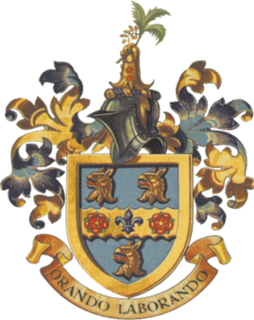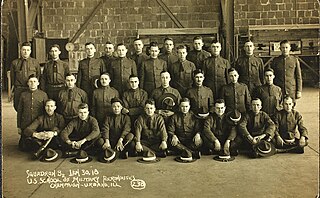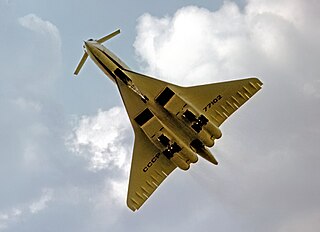Christopher John Dugmore Orlebar (4 February 1945 - 24 February 2018) was a former British Concorde pilot with British Airways. He was well known as a lecturer, writer, and frequent contributor to TV aviation documentaries on aviation subjects generally, and on the Concorde in particular.

The Aérospatiale/BAC Concorde is a British-French turbojet-powered supersonic passenger airliner that was operated from 1976 until 2003. It had a maximum speed over twice the speed of sound at Mach 2.04, with seating for 92 to 128 passengers. First flown in 1969, Concorde entered service in 1976 and continued flying for the next 27 years. It is one of only two supersonic transports to have been operated commercially; the other is the Soviet-built Tupolev Tu-144, which operated in service from 1977 to 1978.
British Airways (BA) is the flag carrier and the second largest airline in the United Kingdom based on fleet size and passengers carried, behind easyJet. The airline is based in Waterside near its main hub at London Heathrow Airport. In January 2011 BA merged with Iberia, creating the International Airlines Group (IAG), a holding company registered in Madrid, Spain. IAG is the world's third-largest airline group in terms of annual revenue and the second-largest in Europe. It is listed on the London Stock Exchange and in the FTSE 100 Index.
Orlebar, the son of Brigadier John Orlebar, was educated at Twyford School, [1] Rugby School and Southampton University. He learned to fly in 1965 with the Southampton University Air Squadron (RAF), and then finished his training in civil aviation at the College of Air Training at Hamble. Orlebar joined BOAC (later British Airways) in 1969, and became a VC10 pilot, navigator and instructor. He became a Concorde pilot and instructor in 1976, flying the aircraft for 10 years. He went on to become a training Captain on the Boeing 737 from 1986 and retired from British Airways in 2000.
Twyford School is a co-educational, independent, preparatory boarding and day school, located in the village of Twyford, Hampshire, England.

Rugby School is a day and boarding co-educational independent school in Rugby, Warwickshire, England. Founded in 1567 as a free grammar school for local boys, it is one of the oldest independent schools in Britain. Up to 1667, the school remained in comparative obscurity. Its re-establishment by Thomas Arnold during his time as Headmaster, from 1828 to 1841, was seen as the forerunner of the Victorian public school. It is one of the original seven Great Nine Public Schools defined by the Clarendon Commission of 1864. Rugby School was also the birthplace of Rugby football. In 1845, three Rugby School pupils produced the first written rules of the "Rugby style of game".

University Air Squadrons are training units under the command of No. 6 Flying Training School RAF of the Royal Air Force and their main role is to attract ambitious and intelligent students into careers as RAF officers. Primarily its goal is achieved through offering basic flying training, force development and adventure training to undergraduate students at British universities. These units exist to provide a taste of life in the Service and to give experience to their members in preparation for taking up a career as an officer in one of the RAF's many branches.
A liveryman of the Guild of Air Pilots and Air Navigators, and a Fellow of the Royal Aeronautical Society, Orlebar was in high demand as a lecturer and as a contributor to radio and TV programmes. [2] [3] Orlebar's expertise was called upon particularly following the crash of a Concorde in Paris in 2000. [4] He was diagnosed with Parkinson's disease in 1998.
The Royal Aeronautical Society, also known as the RAeS, is a British multi-disciplinary professional institution dedicated to the global aerospace community. Founded in 1866, it is the oldest aeronautical society in the world. Fellows and Companions of the society can use the post-nominal letters FRAeS or CRAeS, respectively.

Air France Flight 4590 was an international charter flight from Paris to New York City flown by an Aérospatiale-BAC Concorde. On 25 July 2000 at 16:43 Central European Time, the aircraft serving the flight ran over debris on the runway during takeoff, blowing a tyre and puncturing a fuel tank. The subsequent fire and engine failure caused the aircraft to crash into a hotel in nearby Gonesse two minutes after takeoff, killing all 109 people aboard and four people in the hotel, with another person in the hotel critically injured.
Orlebar's book The Concorde Story [5] has been a bestseller since its publication in 1986. Now in its seventh edition, The Concorde Story has remained the most complete record of the history of Concorde in print since it was first published. [6] Starting with Concorde's earliest development, it assesses other forms of supersonic transport and provides the background to Concorde's evolution. It reveals what it was like to fly Concorde, and the training procedures to which Concorde pilots are subjected. The latest edition (2011) brings the story up to date, with chapters on Concorde's final flight and decommissioning, advice on where to go to see Concorde at rest, and information on the Paris crash of 2000. He released a smaller book simply known as Concorde in February 2017.

A supersonic transport (SST) is a civilian supersonic aircraft designed to transport passengers at speeds greater than the speed of sound. To date, the only SSTs to see regular service have been Concorde and the Tupolev Tu-144. The last passenger flight of the Tu-144 was in June 1978 and it was last flown in 1999 by NASA. Concorde's last commercial flight was in October 2003, with a November 26, 2003 ferry flight being its last airborne operation. Following the permanent cessation of flying by Concorde, there are no remaining SSTs in commercial service. Several companies have each proposed a supersonic business jet, which may bring supersonic transport back again.
He is descended from the Orlebars of Hinwick, Bedfordshire, [7] and is survived by his wife, two grown-up children and three grandchildren.

Hinwick is a hamlet in northwest Bedfordshire, England, United Kingdom; it is around nine miles north west of Bedford and is about 1 km (0.62 mi) east of the county border with Northamptonshire which is also the postal county. The hamlet is in the parish of Podington, which is sometimes called "Podington and Hinwick" and this parish was within the Hundred of Willey. Hinwick was recorded in the Domesday Book in 1086 as Haneuuich, also spelt Heneuuiche or Henewich and has also been recorded as Henewic and Hynewyk from the 13th century. Today Hinwick is within the electoral ward of Harrold which is in the Borough of Bedford.

Bedfordshire is a county in the East of England. It is a ceremonial county and a historic county, covered by three unitary authorities: Bedford, Central Bedfordshire, and Luton.









